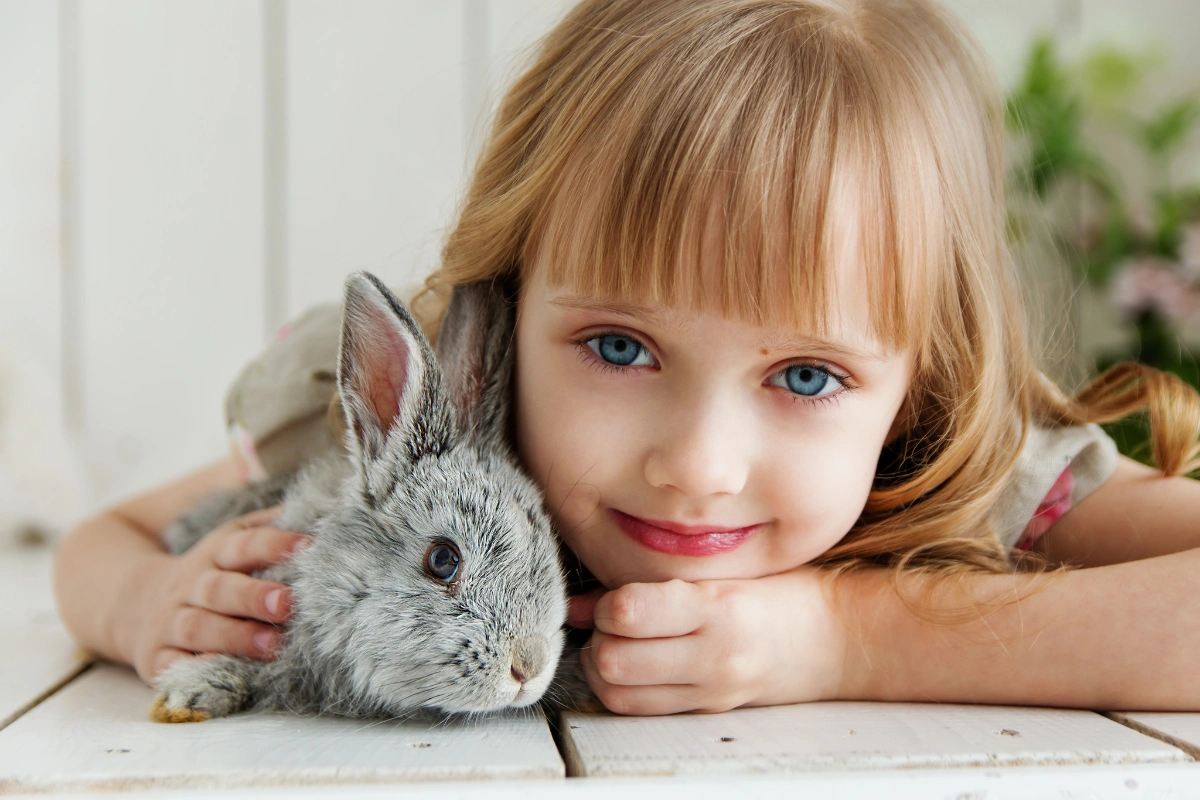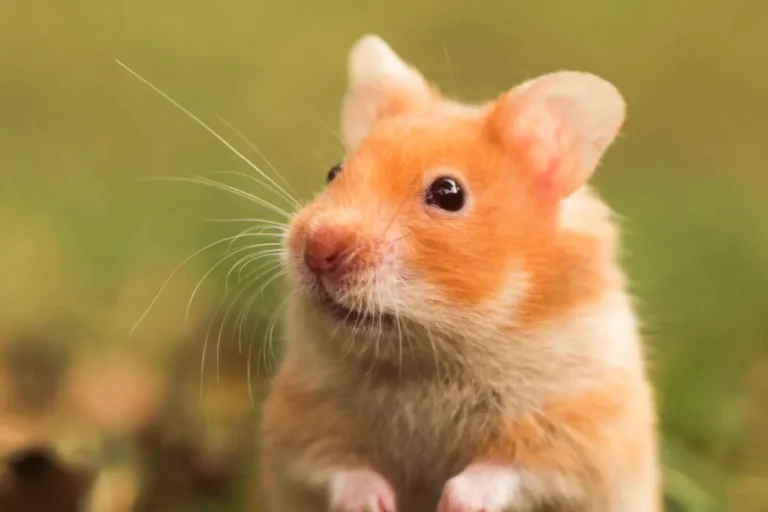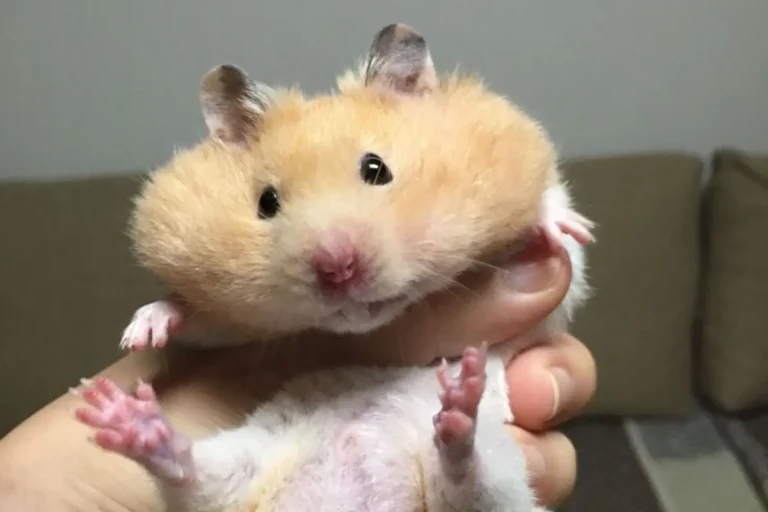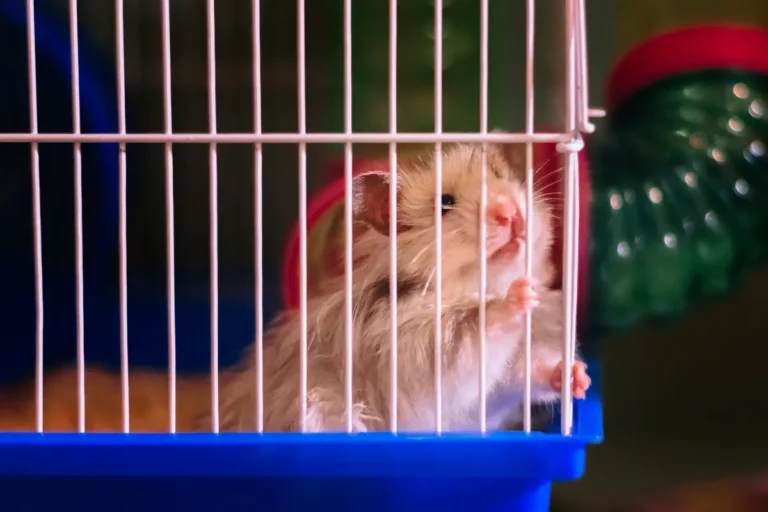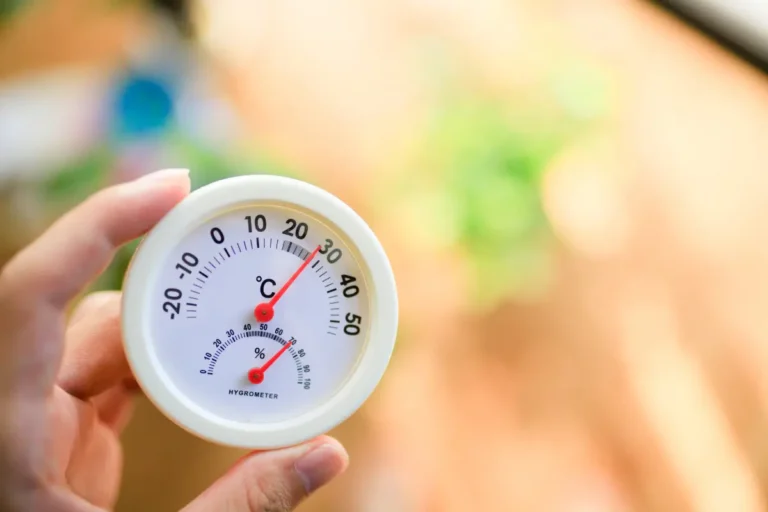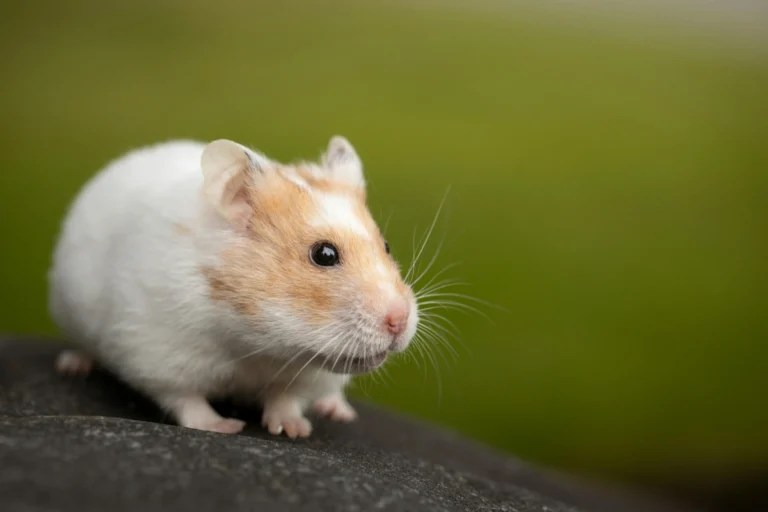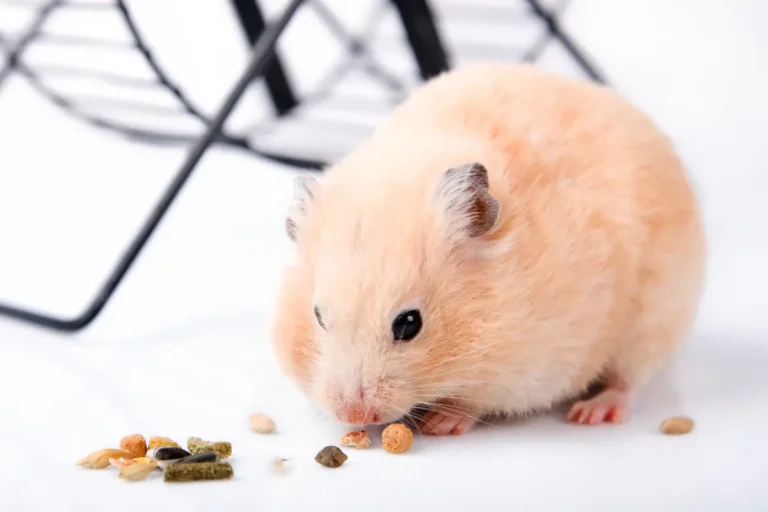Is Your Rabbit Happy? Signs to Look For & Tips to Make it Happier
As rabbit owners, we often find ourselves wondering: Is my rabbit happy? While our furry friends can’t speak, there are plenty of signs that show us when they’re content and healthy. From joyful leaps to gentle nudges, rabbits communicate their happiness through body language, behavior, and interactions with their surroundings.
In this guide, we’ll explore the key indicators of a happy rabbit and share tips on how to ensure your bunny is living its best life.
1. Body Language and Posture
Rabbits are not always vocal, but their body language speaks volumes about their emotional state. A happy rabbit will display several positive body postures, which include:
- Relaxed Body Posture: A happy rabbit will have a relaxed body posture. Their body will be calm and not tense, with their ears in a neutral or slightly forward position. A relaxed bunny may also stretch out their legs and lie flat on their stomach, a behavior known as a “flop” or “sploot.” This position signifies contentment and trust in their environment.
- Binky (Joyful Leap): One of the most iconic signs of a happy rabbit is the “binky.” A binky is a playful jump and twist in the air that rabbits perform when they are especially excited or joyful. If you notice your rabbit doing binkies, it’s a clear indication that they are feeling great!
- Purring or Grunting: While rabbits don’t purr in the traditional sense like cats, they may make a soft, vibrating sound when they are content. This purring-like noise is often heard when they are being petted or when they are relaxed. If your rabbit grunts or makes a soft noise while resting, it generally means they are happy.
- Ears and Tail Position: A happy rabbit will have their ears upright and relaxed. Their ears may be tilted slightly forward if they’re interested in something. A wagging tail or a relaxed tail (if visible) is also a positive sign that your rabbit is in a good mood.
2. Playful Behavior
Happy rabbits are often playful, especially if they are well-adjusted and feel safe in their home. Play is an essential part of a rabbit’s well-being and a clear indicator of happiness.
- Chewing Toys: Rabbits are natural chewers, and providing them with chew toys is a great way to ensure they stay entertained. If your rabbit is happily chewing on a safe toy or a piece of cardboard, it means they’re engaged and comfortable. Chewing is also important for keeping their teeth healthy, as rabbits’ teeth grow continuously.
- Digging: Digging is another common behavior for happy rabbits. In the wild, rabbits dig burrows to create a safe and cozy space, and pet rabbits retain this instinct. If your rabbit is digging in its bedding or on soft surfaces like towels or carpets, it’s a sign that it is feeling playful and secure.
- Exploring and Curiosity: Happy rabbits enjoy exploring their environment. If your rabbit is actively hopping around its space, sniffing, and looking for new areas to investigate, it means it is curious and comfortable in its surroundings.
3. Socializing and Bonding
Rabbits are social animals and, when happy, will often seek interaction with their owners or other rabbits.
- Seeking Attention: If your rabbit approaches you and nudges or rubs against your legs or hands, it’s a sign that they are seeking attention and affection. Rabbits may also nuzzle their owners gently, which is a clear expression of love and trust.
- Licking: Rabbits may lick you as a sign of affection, much like cats do. If your rabbit licks you, it’s a sign that they consider you part of their family and feel comfortable with you. They might also lick other rabbits in the household as a bonding behavior.
- Following You Around: A happy and social rabbit will want to be near you. If your rabbit follows you from room to room, it’s a sign that they enjoy your company and feel secure in their environment. Some rabbits may also seek your lap or try to snuggle up with you, which is a clear indication that they trust and love you.
4. Grooming and Cleanliness
Happy rabbits spend a considerable amount of time grooming themselves, and they will also groom their fellow rabbits if they are bonded. This grooming behavior is a sign of contentment, as it signifies trust and social bonding.
If your rabbit regularly grooms itself, it indicates that it is healthy and content. Rabbits that are stressed or unwell may stop grooming, so a clean and well-groomed bunny is often a sign of happiness.
If you have more than one rabbit, watching them groom each other is a sign of deep affection and a positive relationship between them. It’s an indication that they are happy and comfortable with one another.
5. Feeding Habits
Rabbits are often overjoyed when they receive their favorite treats, and you may notice little twitches or excitement while they’re eating something delicious. These physical reactions are a sign that your bunny is thoroughly enjoying their food and is content with what they are being given.
Rabbits also eat cecotropes, a special type of poop, to maximize nutrition. This behavior might seem strange, but it is perfectly normal and shows your rabbit’s healthy digestion and contentment.
6. Positive Interactions with Their Environment
Happy rabbits will show interest in their surroundings and be at ease in their living space.
A happy rabbit will make its home comfortable by arranging bedding, toys, and other items in a way that feels natural to them. If your rabbit regularly hops in and out of its cage or playpen, it shows that it is comfortable and content with its space.
While some destructive chewing is normal for rabbits, constant destructive behavior, such as chewing on wires or furniture, may indicate stress or boredom. A happy rabbit, on the other hand, will be content with its toys and will not constantly seek out things to destroy.
7. Healthy Sleeping Habits
A rabbit’s sleep patterns can also provide clues about their emotional state. Rabbits are crepuscular, meaning they are most active during dawn and dusk, and they spend a significant amount of time resting throughout the day.
A happy rabbit will rest comfortably, often stretching out or sitting up with their ears relaxed. If your rabbit falls asleep with their eyes partly closed or even with their eyes open, it indicates that they feel secure and at ease in their environment.
How to Keep Your Rabbit Happy and Healthy
Now that you know how to recognize a happy rabbit, here are some tips to ensure your bunny stays happy and healthy:
1. Provide a Large Habitat
Rabbits are naturally active animals that need plenty of space to run, jump, and explore. A larger living space is crucial for their physical and mental well-being. Even if you don’t have access to a large backyard, you can still give them room to move by investing in the biggest cage that will fit in your living area.
For those with smaller spaces, a safe, designated play area with pet gates works wonders. Ensure the area is bunny-proofed to eliminate hazards. This allows your rabbit to stretch, jump, and explore freely, which is essential for keeping them happy and healthy.
2. Stick to a Meal Plan
Just like humans, rabbits thrive on a predictable routine, especially when it comes to meals. Establishing a consistent feeding schedule helps your rabbit feel secure. Make sure to provide fresh greens twice a day—one serving in the morning and another in the evening—and always offer unlimited hay and fresh water.
Hay is crucial for your rabbit’s digestion and overall health, and it should be available at all times. Water is just as important, so make sure your rabbit has access to a clean, fresh water source throughout the day.
3. Use Carpet for Comfort
Rabbits’ delicate feet are prone to slipping on hard surfaces like tile or wood. To ensure they’re comfortable, add soft materials like carpet to their habitat. A carpeted area provides traction and offers a cozy spot for them to rest. In colder months, they may even prefer to snuggle on the soft carpet rather than a hard, cold surface.
Make sure there are enough comfortable spots for your rabbit to walk and relax in its living area. This will prevent foot injuries and keep them happy.
4. Engage in Fun Games
Rabbits are curious and love to play. Engaging your rabbit in fun, stimulating activities is an excellent way to keep them entertained and active. Simple toys like old boxes, paper towel rolls, and bunny tunnels are perfect for encouraging your rabbit’s natural behaviors. Hide treats inside these toys and let your bunny go on a scavenger hunt!
Watching them work to uncover hidden snacks keeps them mentally engaged and happy. Even inexpensive items like cardboard rolls can provide hours of entertainment.
5. Find Their Favorite Treats
Rabbits love special treats, and offering fresh fruits like berries, bananas, or apples can be a delightful way to make your bunny happy. However, fruit should be offered in moderation due to its high sugar content. Always ensure your rabbit is at a healthy weight and doesn’t have any health concerns before offering sweet treats.
Establish a treat routine, and your bunny will eagerly anticipate their snack time. Just remember to wash the fruits thoroughly before serving them to your rabbit.
6. Provide Companionship
Rabbits are social animals that thrive when they have a companion. Whether it’s another rabbit or a human, companionship is key to their happiness. If you’re gone for long periods, consider getting your rabbit a buddy to reduce loneliness and provide additional stimulation.
While some rabbits, like Beanie, prefer hanging out with humans, others enjoy the company of a furry friend. Having a companion enhances their quality of life, reduces stress, and gives them someone to interact with throughout the day.
7. Be a Bunny
Rabbits feel safest when interacting with others at their own level. Instead of standing above them, get down on the floor and engage with your bunny at their height. This helps them feel more secure and less threatened. It also fosters trust and strengthens your bond with your bunny, making them feel safer and happier around you.
8. Offer Plenty of Petting
Rabbits love to be petted, but it’s important to do so in a way that makes them feel comfortable. Gently stroke your bunny, especially in areas they enjoy, like behind the ears or under the chin. Mimic how rabbits would interact with each other—soft and gentle petting without rough or overly energetic touches.
When your rabbit relaxes and closes their eyes while being petted, you’ll know you’re doing it right. This physical contact helps strengthen your bond and enhances their overall well-being.
9. Teach Your Rabbit a New Trick
Rabbits are highly intelligent creatures, and they love to learn. Teaching them a new trick can be a fun way to bond and engage with your bunny. Start simple with basic tricks like standing on their hind legs, then gradually move on to more advanced tricks.
Patience and positive reinforcement are key to successful training. Offering treats as rewards will motivate your rabbit, and the process will help them stay mentally stimulated and happy.
Final Thought
Ensuring your rabbit’s happiness and well-being is all about understanding their needs and responding to their unique ways of communicating. With patience, love, and the right care, your rabbit will thrive and bring endless joy to your life.
